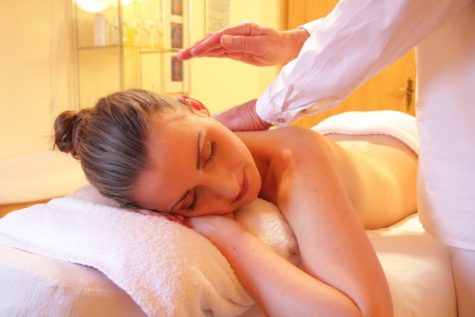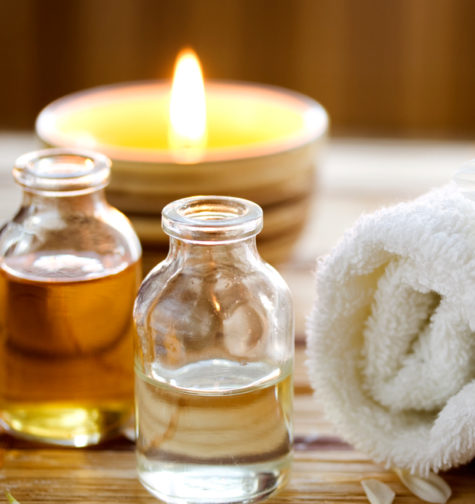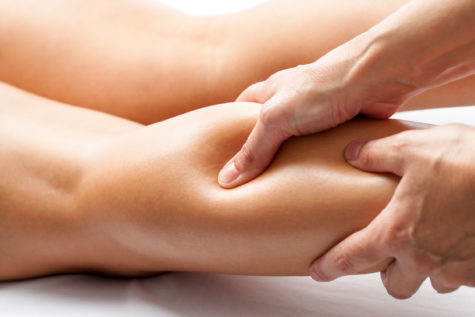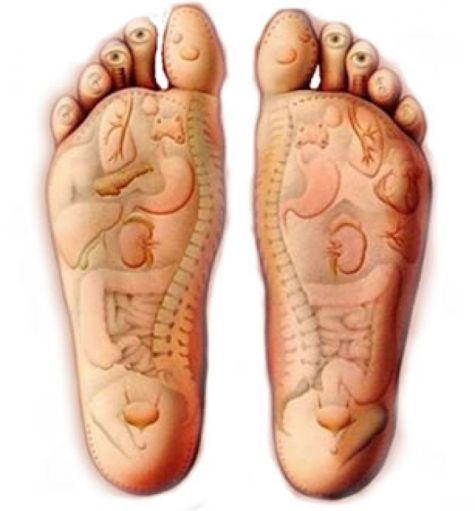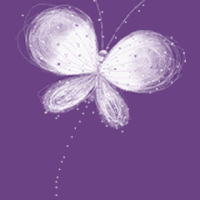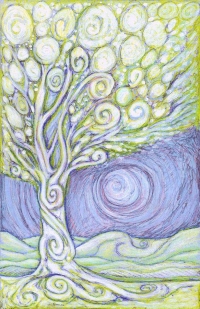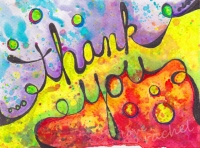Massage
How to Give Yourself a Relaxing Scalp Massage

Proper knowledge of the pressure points on head helps provide an extremely relaxing and effective method of getting rid of your migraine. It releases tension, increases blood circulation and enhances one’s mental state.
The following are steps for performing a scalp massage:
- First, find a place in your room that is comfortable and noise free. Take a seat at that spot.
- Next, place fingers of both hands on your forehead and let them touch each other at an imaginary midline and keep your thumbs rested on the temple.
- Apply firm but light pressure on the forehead and then release the pressure. Repeat this.
- Next shift your fingers along with the thumb further up your forehead towards the hairline region. Press again and release, and repeat the steps.
- Now move further up with your fingers on your scalp and keep pressing and releasing with your fingers.
- An acupressure point lies three quarters of the distance from your hairline up your scalp. Press your scalp at this point and release.
- Keep moving downwards towards your neck with your fingers and keep massaging various pressure points on head.
- Once you reach the base of your skull, move all the way back to the forehead again. This time place your fingers half an inch away from the imaginary midline of your forehead and work all the way up like earlier in this new position.
- Again get back to the forehead and this time place your fingers at an inch’s gap from the midline and work your way up.
Once you get used to this procedure, synchronize it with your breathing. Inhale while you press and exhale while you release.
Source: New Health Advisor
Therapeutic Value of Massage
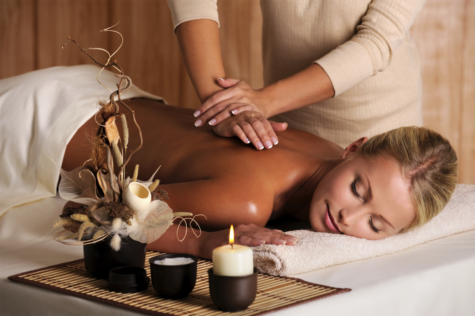
Massage is an excellent form of passive exercise. The word is derived from the Greek word ‘massier’ which means to knead. It involves the scientific manipulation of the soft tissues of the body. If correctly done on a bare body, it can be highly stimulating and invigorating. As far back as 400 B.C. , the great Hippocrates, the father of medicine, employed massage and manipulation in healing his patients. Since then it has been used as a mode of treatment for many ailments and it has restored many a sufferer to health and vigor.
Benefits
The general massage, dealing with all parts of the body, is highly beneficial in many ways. It tones up the nervous system, influences respiration and quickens the elimination of poisons and waste material from the body through the various eliminative organs such as the lungs, skin, kidneys and bowels. It also boosts blood circulation and metabolic processes. A massage removes facial wrinkles , helps to fill out hollow cheeks and neck and eases stiffness, sore muscles and numbness.
Various movements
There are five fundamental modes of manipulation in massage and these are : effleurage (stroking), friction ( rubbing), petrissage ( kneading), tapotment (percussion) and vibration (shaking or trembling).
- Effleurage
This involves sliding with the hands, using long even strokes over the surface of the body. Effleurage is performed in five ways, namely stroking with palms of two hands; the palm of one hand; the knuckles; the ball of the thumb and the finger tips. Effleurage increases blood circulation and soothes the nervous system. It also warms and relaxes. It is very helpful in atrophied condition of the skin.
- Friction
The movements, which are circular in nature are performed with the help of the thumb and tips of fingers or the palm of the hand towards the joints or around the joints. Friction limbers up joints, tendons, and muscles and facilitates the removal of deposits by breaking them. It also helps in reducing swelling after nerve inflammation.
- Petrissage
This is the process of kneading, pressing and rolling of the tissues and is performed with one or both hands, with two thumbs or with thumbs and fingers. One should apply heavy pressure for deep kneading and light pressure for superficial kneading. Petrissage is a treatment of the muscles. It increases nutrition, strengthens muscles, relieves intestinal congestion and helps elimination of the poisons. It boosts long activity and cellular respiration, eliminates fatigue poisons and tones up nerve endings.
- Tapotement
This involves hacking, tapping, clapping and beating and is achieved by striking the body rapidly. Short and quick blows are generally given from the wrist. Tapotement helps in atrophied condition of the muscles. It increases blood supply, soothes nerves and strengthens muscles.
- Vibrations
This is achieved by rapidly shaking the pressing movements by use of the hand or fingers on the body. Vibrating hand should move constantly. This is beneficial in neuritis and neuralgia after the inflammatory stage is over. It stimulates circulation, glandular activity and nervous plexuses. It also helps in bowel movement. Another form of massage helpful in most elements is the vibratory massage. This can be done by trained persons only. The vibratory muscles is more efficiently administered by a special, electrically operated machine.
Material for Massage
Cotton seed oil is most commonly used for massaging, but butter is used for filling out cheeks and the neck and also for breast enlargement. If the patient is averse to oil, talcum powder may be used. Oil should not be used by persons with excessive body hair. General body massage may be done for 40 to 45 minutes and local body massage for 10 to 15 minutes. The oil should be washed off completely after massage.
Therapeutic Uses
Massage can be used with advantage as a method of treatment for many common ailments. The various forms of massage and their usefulness in various diseases are described here in brief.
- Massage of the Joints
Stiff and swollen joints can be cured by massage combined with mechanical movements. Massage is, however, not recommended in serious inflammatory cases of the joints and in tubercular joints. It should also be avoided in infectious diseases like diphtheria and gonorrhea which cause formation of pus as massage may spread the pus to the entire system.
Sprains and bruises can be cured by massage. In these cases, affected parts should first be bathed with hot water for 15 to 30 minutes. Next the massage should be done for a few minutes. Gentle stroking and kneading is recommended on and around the injured tissues.
Fractures can also be treated through massage. This form of massage is of great help in atrophy of the muscles which usually follows if the muscles are not used for any length of time. This condition may also be brought about by injuries, diseases of the joints, inflammation of the muscles and nerves, and by too long use of cats, bandages and splints.
A human being carries one half of the weight of his body in the form of muscular tissues. One fourth of the blood supply circulates in the muscles. When one gets a good massage treatment, the muscles get regenerated and are then capable of holding half of the blood supply. Massage thus provides additional nourishment to feed the muscular tissues, helping them to grow strong. Tapping, striking, and vibrating help the muscle to develop its contractile power.
Muscle massage is brought by first effleurage, kneading, followed by tapotement. Later, active and passive movements are given. Massage is employed for eliminating muscle contraction and for breaking of adhesions. A little moderate kneading, and percussion cause muscles to contract and become stronger. Deep circular kneading and vibration loosens the muscles. Kneading under and round the muscles breaks up adhesions.
- Massaging the nerves
Massage benefits many nerve problems. In case of acute inflammation of the nerves, massage should be done carefully. Light and gentle stroking are recommended. Deep pressure should not be used on swollen nerves for it will increase the inflammation. All that is needed is just a gentle tapotement or beating of the nerve.
Nerve compression is recommended for soothing nerves. Grasp the limb with both hands, and create firm pressure around and down the arm. Start with the shoulder and proceed down to the wrist. As you leave the grip, bring the hands down a little and make another pressure. As a result, blood circulation will increase.
Spinal nerve compression is extremely beneficial. It is done by the palm of the hand. Vibration of the fingers stimulate it. Sleeplessness can be cured by long slow and gentle stroking down the spine and entire back.
- Abdominal Massage
This form of massage is beneficial in constipation. It stimulates the peristalsis of the small intestines, tones up the muscles of the abdomen walls and mechanically eliminates the contents of both large and small intestines. Abdominal massage should not be done in general, femoral, inguinal and umbilical hernia, inflammation of the uterus, bladder, ovaries and Fallopian tubes, kidney stones, bladder or gall bladder, ulcers of the stomach and intestines, and pregnancy.
Abdominal massage should not be done after a heavy meal, but after two hours or so. The bladder should be emptied before the massage. The patient is made to lie on his back with his knees drawn up. This enable the abdomen wall to relax. The masseur should stand at the right side of the patient and use his finger tips for friction round the umbilical region from right to left. He should likewise alternatively knead the walls and roll with both hands, making deep and firm pressure. He should knead with the hand and finger tips and keep clear of any wound or tender places. He should later take up massaging of the larger intestines.
The manipulation of the large intestine should begin on the right side. Keep it going upwards and across the transverse colon and move right down on the left side to the signoid flexure and rectum. Circular kneading should be done with the help of the three middle fingers. At the same time press into the contents of the abdomen, following the course of the larger colon with a crawling motion. Keep kneading by means of a few circular movements in one spot with the help of finger tips. Keep moving the fingers a little further along. Knead repeatedly.
Use knuckles of the hand to make deep pressure along the large colon, moving the hands along after each pressure. Once the kneading of the abdomen is over, follow up by tapotement with both hands cupped or use the knuckles of the hand. Vibration may also be employed. The patient could also be asked to do some gymnastic exercises for strengthening the walls of the abdomen.
Since blood pressure increases during abdominal manipulation, patients with hypertension should avoid abdominal massage. Massage should also be avoided in cases where there has been recent bleeding in the lungs, the stomach or the brain.
- Chest Massage
Chest massage is helpful in many ways. It strengthens the chest muscles, increases circulation and tones up the nervous system of chest, heart and lungs. It is especially recommended in weakness of the lungs,palpitation and organic heart disorders. Bust and mammary glands can be developed by proper massage. The patient is made to lie on the back with the arms at the sides.
The masseur starts manipulating the chest by means of strokes with both hands on each side of the breast bone. A circular motion is formed by the movement made up and down, moving down the chest. Next the muscle kneading is done by picking up the skin and muscles with both hands. Treatment is given to both sides of the chest likewise. Circular kneading is next done by placing one hand on each side of the breast bone and making the circular motion outward towards the side. Tapotement follows by hacking and slapping.
- Massage of Back
The purpose of the massage of the back is to stimulate the nerves and circulation for treating backache, rheumatic afflictions of the back muscles, and for soothing the nervous system. The patient is made to lie down with the arms at the sides. The masseur effleurages the back from the shoulders downwards using both hands on each side of the spine. Stroking is done from the sacrum upward. Friction follows with each hand at the sides of the spine going down slowly.
Next, kneading by muscle picking is done with squeezing. Alternate rapid pushing and pulling movement of the hands sliding down the spine. Circular kneading should also be done. The treatment should end by slapping, hacking and cupping on each side of the spine. Gentle stroking and light kneading of the back is relieving and soothing. Percussion and vibration result into stimulating experience. Vibration of the end of spine benefits the sacral nerves and pelvic organs. It is recommended in constipation, hemorrhoids, weakness and congestion of the bladder and sexual organs.
- Massage of the Throat
This helps to overcome headache, sore throat and catarrh of the throat. The patient is made to throw his head back. The masseur places palms of both hands on sides of neck with thumbs under the chin, and fingers under the ears. A downward stroke is next made towards the chest over the jugular veins. Do not exert heavily on the jugular veins.
About Reflexology
Reflexology involves the use of different massage and pressure techniques to relax and loosen muscles in the feet and hands. Reflexology is based on the concept that energy zones connect certain areas of the body to the feet and hands. In this way the feet and hands are viewed as maps or mirrors of the body. Putting pressure on and massaging specific points on the feet or hands is believed to affect the corresponding area of the body.
Each foot contains more than 7,000 nerve endings. Technically, foot massage with a clear intention to manipulate these nerve endings is a form of reflexology. To an extent, reflexology can be performed on oneself.
Source: Holistic and Complementary Therapies
About Massage Therapy
Massage therapy is the manipulation of muscle and connective tissue to enhance function and promote relaxation and well-being. It is an alternative and complementary healing modality that dates back to prehistoric times.
Massage therapy can be as simple as a back rub performed by a loved one or as complex as sustained light and deep tissue massage performed by a massage therapist.
Different types of massage therapy and techniques exist. Massage therapy can include pressing, rubbing, pulling, staccato touch, light touch, gliding strokes, matching, back walking, kneading, tapping, shaking, and cupping. These various techniques are practiced differently from culture to culture and may be given different names.
Source: Holistic and Complementary Therapy
